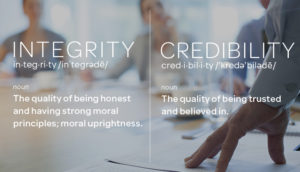Over the past 20 years I’ve had the privilege of taking part in of some of the most significant changes in the telecommunications industry: the emergence of cellular networks, the commercialization of the Internet, the rollout of fixed and mobile broadband networks, the mass adoption of smartphones, and now the Internet of Things.
As a result of my experiences running businesses in domestic and international environments that used fixed and wireless technologies, I have seen a tremendous amount of change. I have seen fixed networks go from analog to digital to all IP (Internet Protocol), and wireless networks go from 1G to 2G, and from 2G and 3G to 4G. Along the way we crossed some very important milestones. Let me share a few stories that highlight these milestones.
Madonna’s video triggered a 3G launch
When I was running our wireless business in Latin America in 11 countries, we had analog networks, iDEN networks, GSM networks and CDMA networks because each country was operated as an independent entity with different partner structures.
As we began to unify our operations in the region, it became clear that we needed to unify the technology we used across our countries. We chose CDMA for a number of reasons that were appropriate for the region at that time. In fact, we were one of the first companies to launch CDMA EV-DO (Evolution-Data Optimized), a 3G mobile broadband technology. We launched 3G in Caracas, Venezuela, ahead of some carriers launching it in the US.
To this day I still remember being driven in a van around the streets of Caracas while we were wirelessly streaming a Madonna video on a laptop using EV-DO. That experience opened my eyes to the fact that 3G and mobile broadband were going to be really, really important, and that we needed to get to the future first. The Madonna video helped me envision a future with pervasive mobile broadband, so we started to move all our Latin America properties to CDMA and 3G technology. Little did I know that this event would play a significant role in the rollout of 3G in the United States. That story is next.
Getting to the future first
One of the most significant changes in the technology evolution was the change from 2G to 3G. The change from analog to digital was big. The change from 1G to 2G was important. But the change from 2G to 3G was really impactful. Companies that did not execute the change well at this pivotal point suffered significant consequences.
I faced one of those pivotal points again in my next assignment as chief operating officer for Cingular Wireless in the US. When I joined Cingular in 2004 I was immediately involved in the largest all-cash merger transaction in the history of the US at that time: that of Cingular Wireless with AT&T Wireless.
The reason the merger was so important is that it was the first time in the history of the wireless industry that two overlapping nationwide networks were converged and merged to be one. It was one of the biggest undertakings ever attempted at the time and our challenge was to do it in record time.
When I came into the job our engineers told me that in order for us to get the integration done in the timeframe allowed, we needed to merge both networks as 2G first and then evolve to 3G. It would be too much to do both at the same time. However, that meant we would have to wait two years or longer to have a nationwide 3G network.
I told our engineers we needed to find a way to do both at the same time. I’ve seen the future, and it’s 3G, I said, recalling the Madonna video playing on a laptop in a moving car in the streets of Caracas. I insisted that our engineers find a way to do both: to integrate the 2G networks into one nationwide 2G network but to simultaneously build the foundation for a nationwide 3G network. We worked with Qualcomm to develop new chipsets so that the selected technology we had used in the US, which was GSM HSDPA (High Speed Downlink Packet Access), could fall back to EDGE. As a result, we were the first to commercially launch the first large-scale 3G HSDPA deployment in the world.
The impact that one video in Caracas had on me was huge because I saw the future and was able to react in time to take advantage of the biggest merger in US history at the time, and get us to 3G HSDPA first.
The iPhone and the smartphone revolution
Getting us to 3G first was critical for the next big thing that happened, which was the launch of the iPhone and the beginning of the smartphone revolution.
Although we launched the iPhone with Apple on 2G, I believe that Steve Jobs knew early on that that the phone would work best on 3G, and I suspect he wanted to make sure that the operator he selected had a 3G network based on worldwide standards. That led us to accelerate 3G and to landing the iPhone, which led to one of the biggest revolutions in the entire industry as mobile data usage exploded.
I was probably one of the first people to see the iPhone. In fact, when the late Steve Jobs invited me to see it, he had me sign a nondisclosure agreement on the spot, committing me not to tell anything about the phone to anyone, including my CEO, my board, or even my wife.
When I first saw the iPhone I knew immediately that it would be a breakthrough device. It was a marvel of design, technology, and software all in one package. There was no question in my mind that the combination of a multi-touch screen music device, a revolutionary mobile phone, and an Internet communications device in one single package was going to be a game changer.
And it was. By using a software-based keyboard, the iPhone began a major trend to replace hardware functions with software. A trend that continues to this day as networks and devices evolve to be more software driven.
When Steve showed me the iPhone prototype, my first question was, “Where’s the stylus?” Until that time, smartphones that had touchscreens required using a stylus for accuracy. I’ll never forget his answer. Steve wiggled his index finger and said, “This is the stylus.”
The iPhone was revolutionary in a number of ways, and not having a stylus was just one. It also proved that smartphones did not need to have physical keyboards. And that, with visual voicemail, recorded messages didn’t need to be played in the order in which they were received.
All that meant that for us to collaborate with Apple and bring the iPhone to market we had to redesign our systems and processes to work with the revolutionary characteristics of the iPhone. In other words, we had to unlearn all we had learned about smartphones and relearn new paradigms.
The iPhone paved the way for the smartphone revolution and the mobile data revolution. Since 2007, wireless mobile data on our network has increased by an amazing 100,000 percent, and the smartphone has become the remote control of our lives.
Getting to 3G and launching the iPhone on our network was pivotal for us and ushered in the smartphone and data revolution.
The next big growth wave: The IoT
We took the same lessons from 3G and applied them to 4G, and now we’re applying them to the Internet of Things (IoT), which in my opinion is one of the next big things.
The IoT brings a new wave of innovation and opportunity to the industry because of the number of things that can potentially be connected to the Internet — as many as 50 billion by 2020, according to analysts.
The new wave is being fueled by the combination of smart devices, mobile data, cloud connectivity and advanced software. That convergence is creating an innovation platform that is changing the way individuals live, work, learn and play. It’s also allowing businesses to reinvent themselves using real-time operations data.
What’s even more exciting about this wave is the need for collaboration. Technology is much too complex for any member of the ecosystem to be able to provide fully innovative solutions alone. Collaboration between operators, manufacturers, software developers and all the players in the industry becomes essential.
Of course, collaboration is not new. We collaborated with Qualcomm, Samsung and LG to launch the first HSDPA phones. And, of course, we collaborated with Apple for the launch of the iPhone. The point I want to make is that today, our range of collaboration is much greater given the breadth of devices we already connect to our network.
Let’s take the connected car, for example. At the beginning there was some skepticism by some in the industry as to whether cars needed to be connected. I think that question has largely been answered just with the real-time information that the connected car provides to the manufacturer. It’s a huge benefit, not just to manufacturers to get real-time data on how their cars are performing, but also it’s a much better way for customers to get their software upgraded in their cars rather than going to a service station, for example, to get your maps updated. You now can get them updated over the air using cellular connectivity.
We already collaborate with most major car manufactures to bring connectivity to their new car models. We also collaborate with software developers, equipment macnufacturers, and developers, just to name a few.
Working with other members of the ecosystem gives you a broader vision of what is possible with this new innovation platform. I can still remember the time when Elon Musk, CEO of Tesla Motors, invited Randall Stephenson and a few of us to visit his factory to test-drive one of the new Tesla cars. The experience was unbelievable. As I sat in the car, the first thing that made an impression on me was the 17-inch screen. As I put my foot on the pedal, I experienced the quiet but super-fast acceleration, not unlike the super-fast 4G networks that will connect Tesla cars. It was a great insight into what the cars of the future were going to be, and they included not just the electrical element but they were absolutely going to be connected. Just like my experience in Caracas, the Tesla visit convinced me that the connected car revolution was about to take place and we were getting to the future first, again.
On the cusp of a new connected society
I consider myself fortunate to have been able to be part of several key milestones in technological development that have led to profound changes in the way we live and work.
It has been an amazing 20 years of development, but what’s even more amazing is that the pace of innovation is increasing rapidly. I’m excited by the possibilities that the next 20 years will bring.
We’re clearly on the cusp of new society, a connected society driven by innovation in how services are delivered and consumed. A connected society where human potential can expand, business efficiency can increase, and where the world becomes more sustainable. It’s an exciting world. But we have to do it with a high degree of security, respect people’s privacy and do it in a way that makes all these services effortless to use.
The next 20 years are going to be even more amazing than the last 20 — strap your seatbelt and enjoy the ride (in your connected car).



